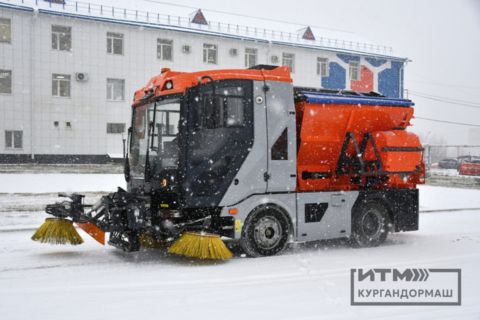Employees of South Ural State University have created a prototype of the first Russian unified software for managing the technological equipment of municipal vehicles of various classes. The project is being implemented jointly with an industrial partner, the Kurgan Road Machinery Plant, within the frameworks of the World-class Ural Interregional Research and Education Centre (UIREC) (Science and Universities national project). In 2022, it was among the winners in the competitive selection for subsidies for the implementation of scientific and technical projects included in the list of the UIREC from the Government of the Chelyabinsk Region.
The development by Chelyabinsk scientists will improve various technological processes that municipal vehicles carry out in our city: sweeping, watering, cleaning, and snow removal.
"Cleaning is usually done manually, when the driver, who is also the operator, turns the equipment on and off depending on the need," says Andrey Martyanov, Associate Professor at the Department of Electric Stations, Networks, and Power Supply Systems. "For example, a snow removal machine goes out on a route, the driver estimates the amount of snow by eye, lowers the brush, then raises it, and generally adjusts it somehow. That is, the quality of cleaning depends on the experience and diligence of the operator."
SUSU scientists decided to eliminate the influence of the human factor and developed an automated system that, based on the traffic situation, will automatically select one or another cleaning mode, not allowing the operator to interfere with the process.
"Currently, each machine has its own control panel and interface," says Ramil Zakirov, Director of the SUSU Research Institute of Experimental Mechanical Engineering. "We analysed the existing software and developed a unique technical solution. Our system is not only an actuator that sets various "attachments" (brushes, vacuum cleaner, or sprinkler) in motion. It receives information about the external environment: the degree of traffic congestion, the condition of the road surface, weather conditions. Video cameras and modern image recognition technologies based on computer vision are used here."
According to the plan, the onboard system will consist of modules and their set will be determined by the necessary functions. Currently, the scientists and engineers are calculating the number, composition and functions of these modules so that in the future any system can be configured from them. The development is already at the stage of prototyping. And this will be the first onboard system in Russia using artificial intelligence.
“Computer vision allows us to assess how much a particular operation is needed,” explains Andrey Martyanov. “Let’s say a watering machine is running along a route, and at a certain section our system sees that the road is already clean and, perhaps, high-water pressure is not required there. If there is a lot of pollution, an increased supply is turned on. If a vehicle drives into a puddle, the control unit recognizes that it is driving through a puddle and there is no point in watering it at all. And we want to delegate the decision-making about what needs to be turned on and off to the machine. There are no similar technical solutions in Russia. Perhaps our competitors in the world are following the same paths, perhaps something is being developed in laboratories, but there are no mass-produced systems.”
The project involves an interdisciplinary group of SUSU scientists: specialists from the Computer Engineering Centre, the "Heart of the Urals" Advanced Engineering School, the Research Institute of Experimental Mechanical Engineering, and the Department of System Programming at the School of Electronic Engineering and Computer Science.
The first prototype of the on-board control system for a municipal vehicle will be ready early in 2025. At the same time, the first industrial tests will begin at the Kurgan Road Machinery Plant.
In the future, the technology created by the Chelyabinsk scientists will make it possible to combine the work of several municipal vehicles into a single whole.
"They will be able to coordinate their actions with each other, work as a single complex," says Ramil Zakirov. "The first machine removes dust, the second one waters, and so on. In addition, municipal machines will be able to integrate into a single network of cleaning city streets and even work proactively. For example, snowfall is only being forecast, but the system already knows which place will be problematic, where to go in advance to minimize traffic jams. This is the future, and we are moving towards it."
According to the scientists, the technology they have created will be useful in developing unmanned utility vehicles. While solving the current task, the university staff "keep the future in mind" and develop solutions that will consider what humanity will need in the near future.




